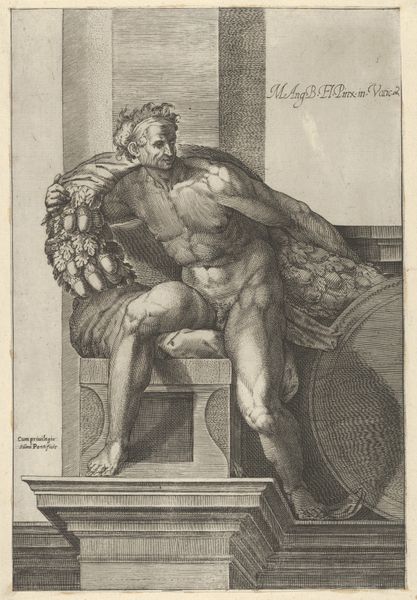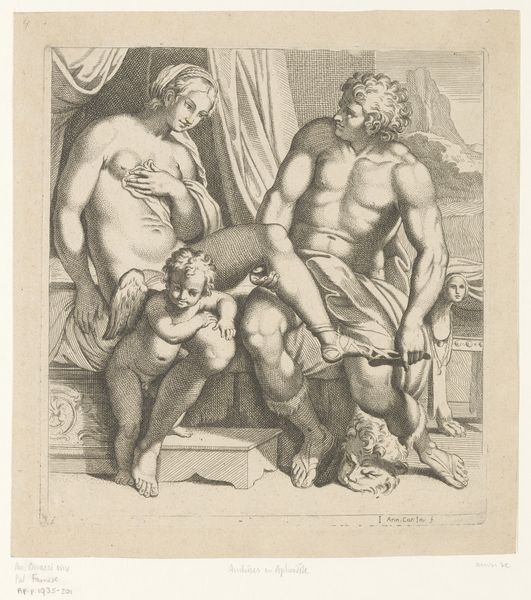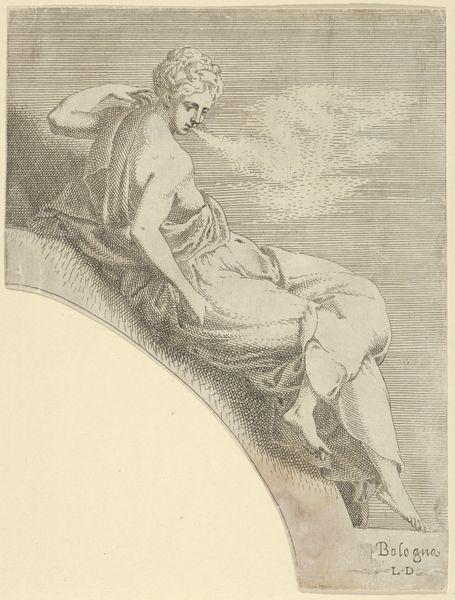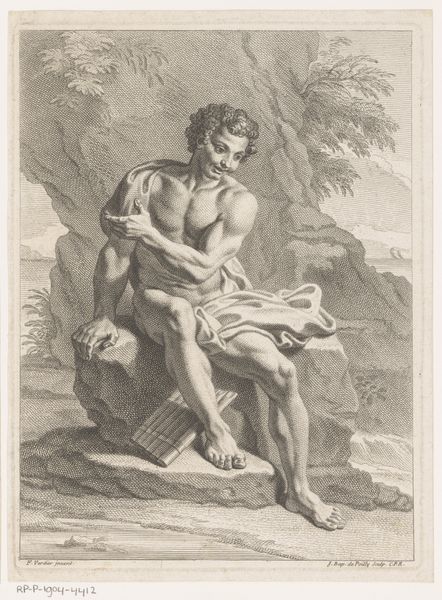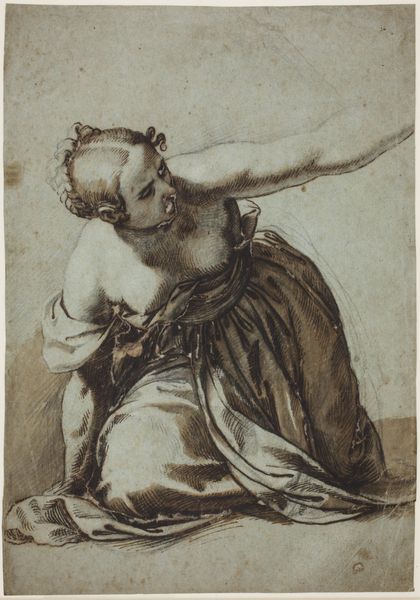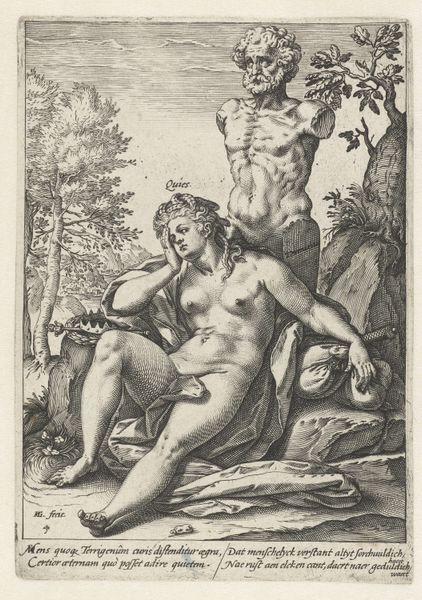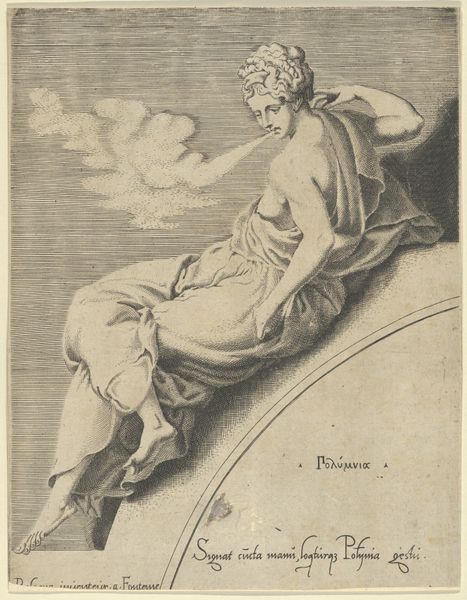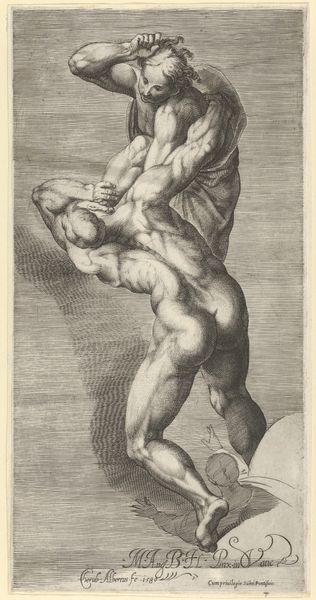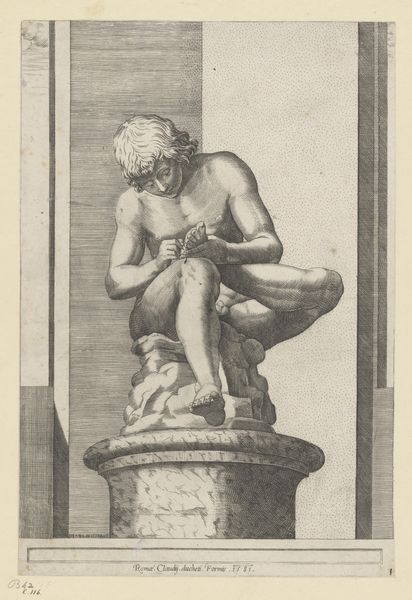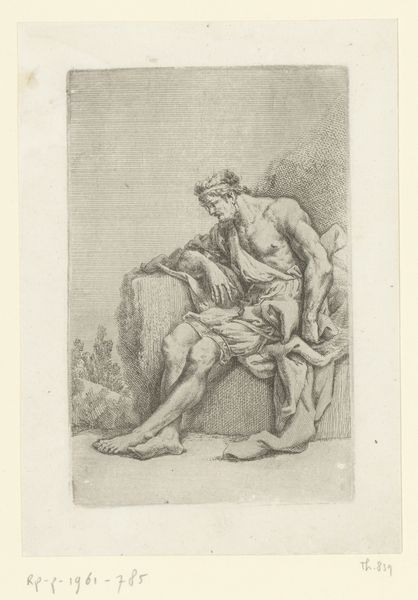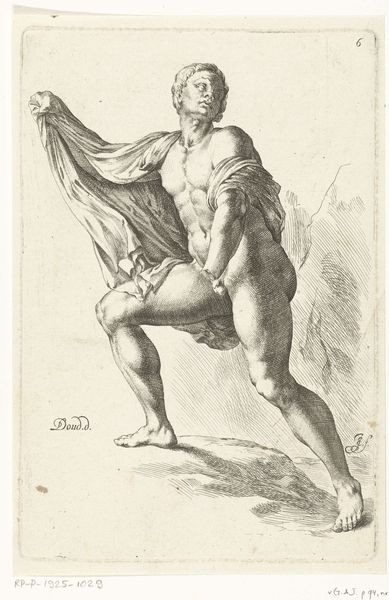
A naked man (Ignudo), seated and facing left, after Michelangelo's 'The Last Judgment' fresco in the Sistine Chapel 1580 - 1590
0:00
0:00
drawing, print, engraving
#
drawing
# print
#
figuration
#
history-painting
#
academic-art
#
italian-renaissance
#
nude
#
engraving
Dimensions: Sheet: 12 3/8 × 8 1/16 in. (31.4 × 20.5 cm)
Copyright: Public Domain
Cherubino Alberti made this print of a nude male figure after Michelangelo’s ‘The Last Judgement’ fresco in the Sistine Chapel. The image offers a glimpse into the cultural and institutional dynamics of 16th-century Italy. Alberti, like many artists of his time, engaged with the immense legacy of Renaissance masters such as Michelangelo. The ‘Last Judgement,’ commissioned by the Catholic Church, was meant to impress upon the viewer its religious ideologies. Alberti's print copies one of Michelangelo’s figures, which were symbols of idealized beauty, yet still caught up in the Church’s message. We can consider the role of the Vatican as a powerful patron of the arts. And, furthermore, the complex relationship between artistic innovation, religious doctrine, and social control. Art historians use a range of resources, including archival documents, critical theory, and social histories, to unravel these complex dynamics. The meaning of such artworks remains contingent on the social and institutional contexts in which they were created and interpreted.
Comments
No comments
Be the first to comment and join the conversation on the ultimate creative platform.

